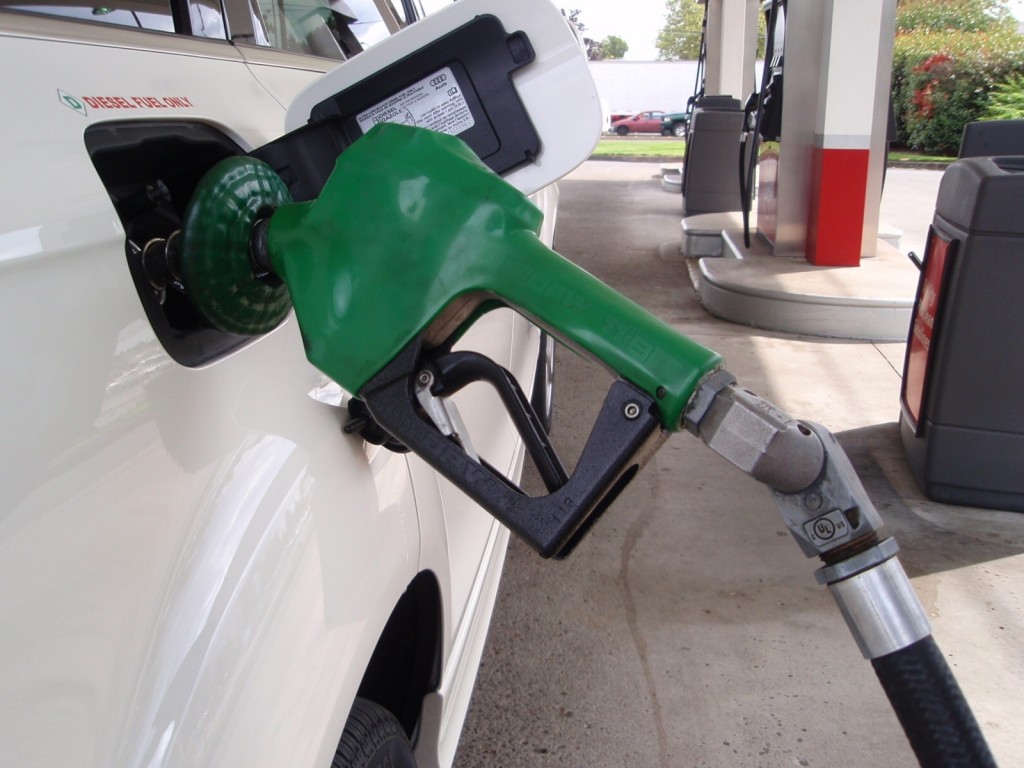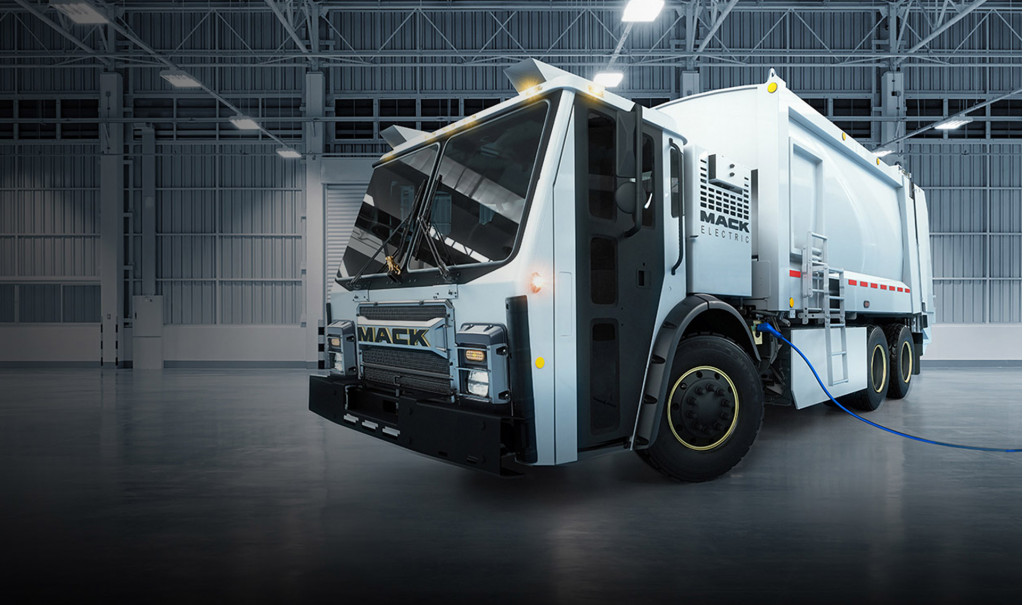The Volkswagen diesel emissions scandal has fallen out of the news, but VW Group recently boosted its allowance for the total costs to 30 billion euros ($33 billion). In the U.S., VW has bought back hundreds of thousands of TDI diesel vehicles and is paying two distinct 10-figure penalties.
The best-known is the $2 billion that will go to create nationwide electric-car charging infrastructure over 10 years, established under the Electrify America brand. A second penalty, at $2.7 billion, has received less attention: The Environmental Mitigation Trust is intended to fund emission reductions that, in sum, outweigh the excess emissions produced over eight years by Volkswagen’s cheating diesel vehicles.

Electrify America DC fast chargers
Last month, the U.S. Public Interest Research Group (PIRG)—the “federation of state PIRGs”—issued a report grading the states’ mitigation plans. Hawaii and Washington got the top grade of A+, but 37 other states were graded at D or F.
They received those failing grades because the U.S. PIRG mechanism for grading can be boiled down to: All electric vehicles GOOD, any diesel vehicles BAD. With only a few exceptions, the eight scoring criteria fall along those lines.
States have considerable leeway in how they spend their funds. They can buy newer and cleaner diesel vehicles, as well as electric and natural-gas vehicles. Up to 15 percent of the money can be spent on EV charging infrastructure.

diesel filling nozzle
Now as described in the PIRG report—which can be downloaded as a PDF—there are eight questions that can each earn a state's plan one point:
- Are electric vehicles prioritized in funding? No point is awarded unless EVs are first to be funded, take the lion’s share of funds, or get funded more generously than non-electrics.
- Are electric vehicles prioritized in the plan goals? No point for the state unless EVs take priority over any other projects.
- Are electric buses prioritized? Electric transit buses must jump to the head of the line to earn this point.
- Are diesel vehicles strictly limited to 15 percent of total funds at most? No point otherwise.
- Are diesel vehicles ineligible for funding at all? No point unless diesel vehicles are totally barred from all funding.
- Can other alt-fuel vehicles (e.g. CNG or propane) get more than 15 percent of total funds? Total funding for all kinds of vehicle other than electric and diesel must be restricted to 15 percent to get this point.
- Is electric charging infrastructure eligible for funds? No point if it’s not.
- Is the state using the full 15 percent allowed for charging infrastructure? No point if not.
In other words, the system is set up to promote electrification above all other technologies. That wasn’t why the Mitigation Trust was formed: It was intended to cut future NOx emissions. Missing from the PIRG scores is any analysis of total nitrogen-oxide reductions, the original goal.
Establishing all diesel as bad
The report frequently refers to “outdated and polluting diesel or other fossil-fuel technology” as if any new diesel vehicle emits the same soot- and carcinogen-spewing uncontrolled it would have 30 years ago.
This is a gross anachronism. Modern diesel vehicles with urea injection have no visible emissions and far lower NOx emissions than uncontrolled diesels. Worse, it is a one-size-fits-all solution that fails to recognize the varieties of ways states can choose to reduce NOx emissions.

Volvo electric bus
With a focus on electric buses and battery-electric vehicles, the report seems to ignore the realities of current vehicle availability and penalize states with diverse vehicles, sparse populations, and winter weather.
For instance, the PIRG report gave a failing 'F' to Puerto RIco and 14 states, and one of those states is North Dakota. It does not have a single “large” transit agency, which the American Public Transit Association defines as more than 2 million boardings a year. The few rural and dispersed-suburban systems cover long distances in sparsely populated areas, in pretty severe winter weather—still a challenge for today's electric buses.
In other words, North Dakota is set to lose points from the start under the US PIRG’s scoring system. It's an extreme example, but the report seems to assume all states include large urban bus systems that can simply and quickly be electrified.
No electric snowplows
This leads to the problem of vehicle types. Electric-car shoppers today can attest it can be difficult enough to meet every family need (albeit most can already). Those swaps will get easier once battery-electric compact crossovers with all-wheel drive go on sale, AWD being a requirement for sales in many states.
For specialized trucks, this issue rings true to an even greater degree. Yet this system’s premise assumes that if it's not an EV, it should be penalized.
When and if there are electric substitutes for every category of vehicle, that might be a realistic approach. Until then, if you’re a state DoT trying to replace a high-usage vehicle powered by a 20-year-old diesel engine without any emission controls, you already know battery-electric alternatives don’t exist for many special-purpose vehicles types—including some with prodigious emissions.
Seen any electric snowplows lately? How about road rollers? The huge dump trucks that carry rock and asphalt for road repairs? Ambulances with multiple life-support systems? And so on. Air quality could benefit from rolling out cleaner diesel or gas versions of these vehicles even before electrics are available.

Mack Electric LR garbage truck
The realities of the vehicle industry are that battery-electric alternatives for many of the dozens or hundreds of types of vehicles operated by states and localities just don’t exist.
It’s about cutting emissions
Public-fleet managers face the reality of having to plan much farther ahead than personal-vehicle buyers, and cost is everything. For new vehicles—especially heavy or specialized trucks—the state or municipality commits to an amortization schedule, which can only be cut short for extraordinary circumstances.
In fact, Maine did just that, creating a metric that looked at “pounds of NOx reduction per dollar spent.” Using that to prioritize its spending, the PIRG wrote disapprovingly, risked “too much focus on short-term cost-effectiveness” which would lead to “continued investment in cheaper but dirtier diesel and fossil-fuel vehicles.”
That sounds perilously close to suggesting that the money should be spent on EVs even if the total reduction in nitrogen oxides were lower. That would seem contrary to the goals of the Mitigation Trust.
Missing the nuance entirely
The purpose of the Environmental Mitigation Trust was to make VW Group pay to reduce emissions—primarily nitrogen oxides, which is what the TDIs cheated on—in quantities that more than made up for the excess NOx its illegal vehicles emitted. It was always envisioned as a way to replace older, highly-polluting diesels with new modern vehicles (whether diesels or other) that emit less.
The PIRG report sets up a circumstance in which the perfect (all electric vehicles, all the time) becomes the enemy of the good (replacing the dirtiest diesels with cleaner vehicles).
In the end, many state governments won’t pay attention to their grade—especially since US PIRG has designated full three-quarters of all state plans as “failing.” The report does little to distinguish possible and immediate solutions from the hypothetical and long-range visions of planners and advocates. On a local level, fleet managers and city councils likely won't respond well to such an all-or-nothing approach either.
That seems like a missed opportunity.













